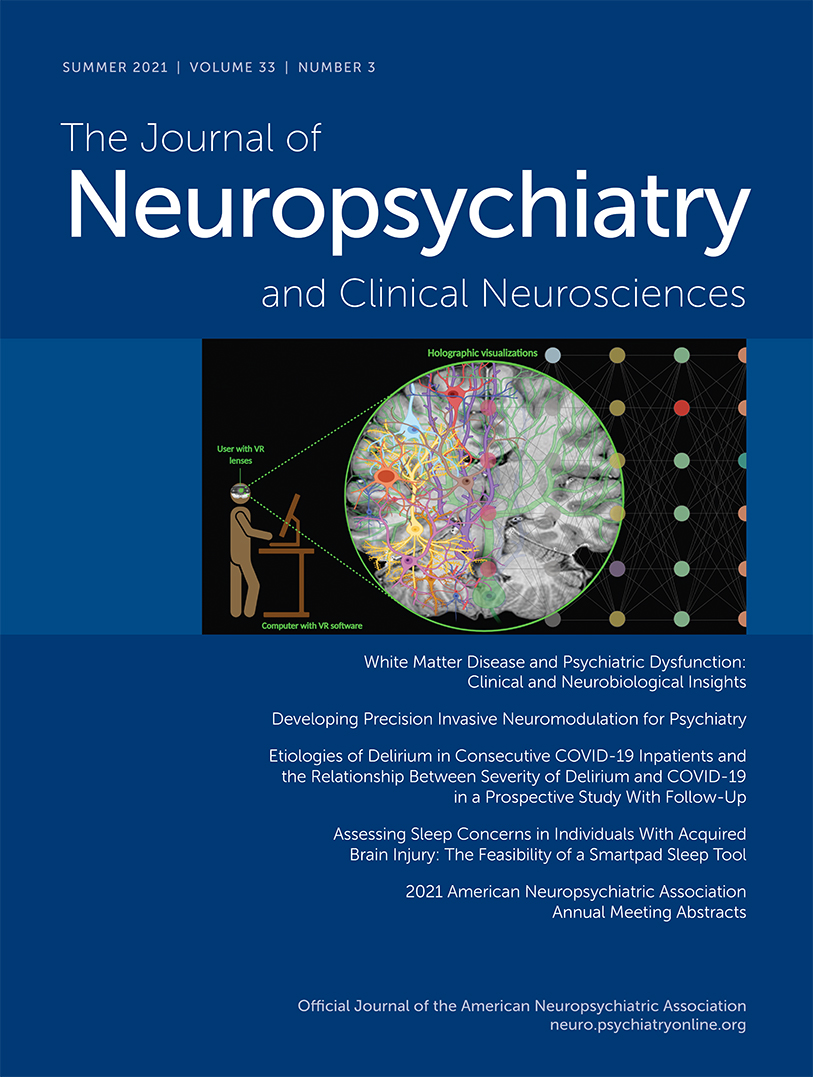Etiologies of Delirium in Consecutive COVID-19 Inpatients and the Relationship Between Severity of Delirium and COVID-19 in a Prospective Study With Follow-Up
Abstract
Objective:
The investigators aimed to describe delirium etiologies and clinical characteristics, as well as the relationship between COVID-19 and delirium severities, at baseline and follow-up after delirium improvement among patients with SARS-CoV-2 infection.
Methods:
A longitudinal study of 20 consecutive critically ill, delirious COVID-19 inpatients, assessed with the Charlson Comorbidity Index–Short Form (CCI-SF), COVID-19 Clinical Severity Scale (CCSS), Delirium Etiology Checklist, Delirium Motor Subtype Scale–4, and Delirium Diagnostic Tool–Provisional (DDT-Pro), was conducted. Correlational analysis of delirium severity (DDT-Pro) with each measure of clinical severity (CCI-SF and CCSS) and comparison of baseline DDT-Pro scores between patients who were living and those who were deceased at follow-up were conducted.
Results:
Participants were 50–90 years old (male, 75%; hypertension, 60%). The prevalence of preexisting medical comorbidities (CCI-SF) was low and not correlated with delirium severity (p=0.193). Eighteen patients were on mechanical or high-flow noninvasive ventilation at baseline in the intensive care unit (ICU; CCSS scores 2–4). Delirium severity (DDT-Pro scores 0–6) correlated with COVID-19 severity (0.459, p=0.021). Delirium motor subtype was hyperactive in 75% of patients. There were three to four etiologies for delirium in each patient, most commonly organ insufficiency (100%), systemic infection (100%), and metabolic and endocrine disturbances (95%). The baseline DDT-Pro score was ≤4 for five (25%) patients who died before the final assessment, with a trend of being lower than that for survivors (χ2=3.398, p=0.065).
Conclusions:
Among inpatients with COVID-19, at least three different etiological categories were identified for delirium. ICU staff treating patients with severe cases of COVID-19 should anticipate a greater severity of delirium. Although multivariate analyses with larger study samples are needed, more severe delirium may herald greater risk of death among COVID-19 patients.



